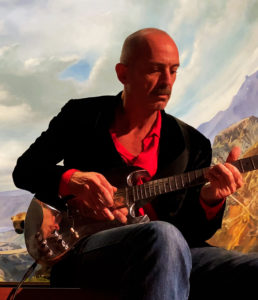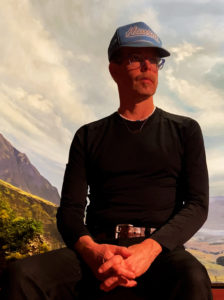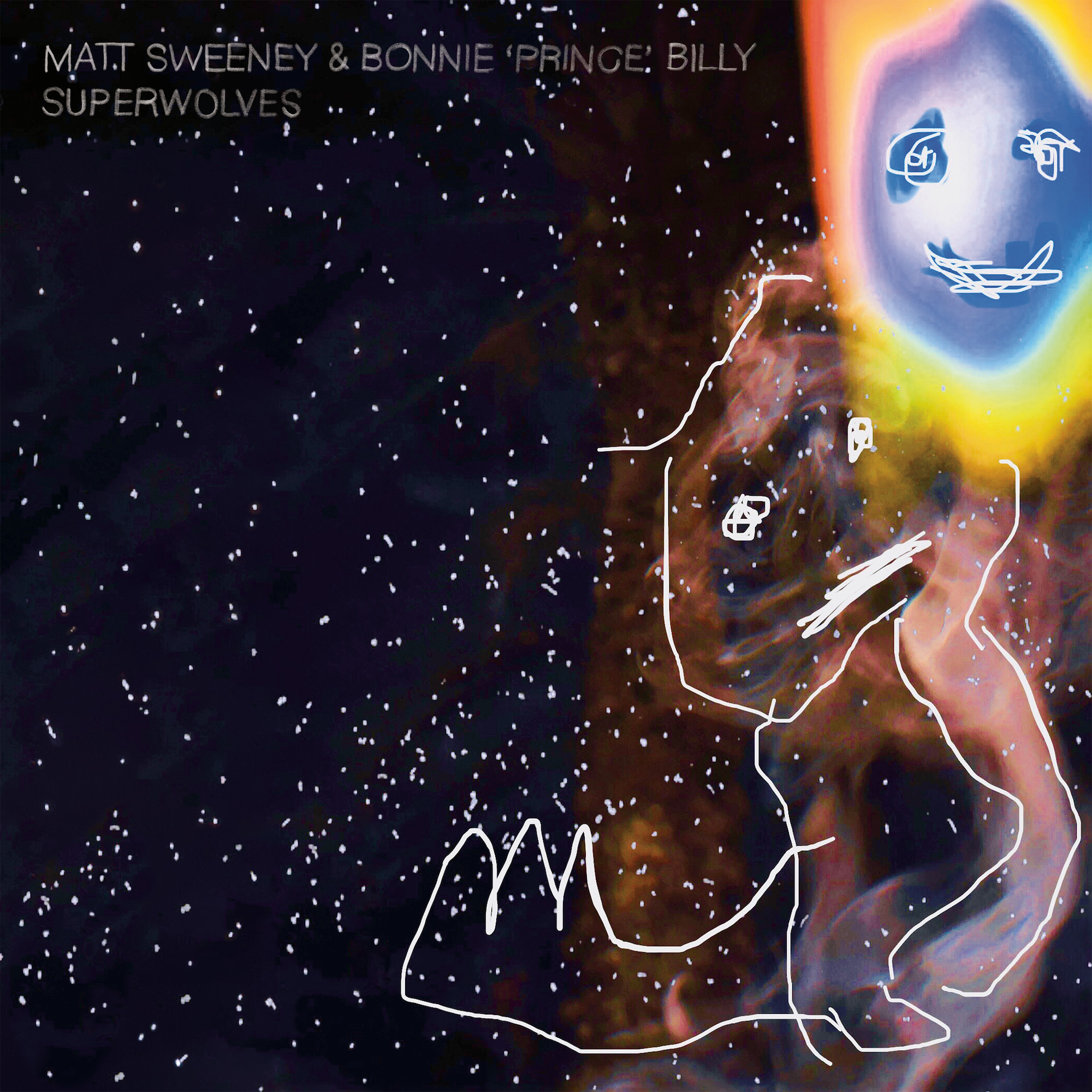The Guest List | Superwolves
music
The Guest List is a regular book column that surveys the reading habits of some of our favorite musicians. For this edition we spoke with Will Oldham (a.k.a. Bonnie “Prince” Billy) and Matt Sweeney. In 2005 the duo released the now cult classic, Superwolf. This year they reunited for a widely praised follow-up, Superwolves, currently in heavy rotation here at SwR. Will and Matt were kind enough to take time out of their busy schedules and answer a few questions about what they’ve been reading lately.
SwR: One of the potential names for the first record was Cockfighters, a nod to the Charles Willeford novel of the same name. The name appeared later as the title for an EP by the Sweeney-fronted band Chavez. What is it about Willeford’s books that appeals to you?

Matt Sweeney: Since I was a teenager, Willeford’s books have appealed to me on just about every level—his eye for hilarious details (especially clothes), his word choice, his understanding of male ridiculousness, and his shocking transitions are all things that still grab me. In Cockfighter, his description of what goes through a guitarist’s mind while playing is so cool.
SwR: The new album was recorded long-distance, with Will sending Matt lyrics, which he would then set to music. Did any specific books or authors inspire those lyrics?

Will Oldham: We began working on the songs together in 2015, Matt saying he was ready and raring to build some new jammers. I was (am always) chomping at the bit to get the boogie-woogie that’s stewing inside of me out into the world, productively. I reached for what was closest at hand, which was Mary Ellen Clark’s photo-essay book Falkland Road, about a street in Mumbai where prostitutes peddle. Three songs—“Good To My Girls,” “You Can Regret What You Have Done,” and “My Body Is My Own”—were directly triggered and inspired by the pages of that book.
The first song of the record, “Make Worry For Me,” opens with the chorus refrain and then dives into a first verse which lifts its opening lines directly from the opening of Tennessee Williams’s The Glass Menagerie: “I have things in my pockets, I have tricks up my sleeve.” I’ve seen many theatrical and cinematic presentations of this play, but it’s the recorded performances of Tennessee Williams himself and of Monty Clift that are most distinctly embedded in my mind. It ain’t a book, but.
SwR: The album artwork features a quote by the Moroccan author/artist Mohamed Mrabet. Can you talk about how you first came across his work and the decision to include his words on the cover?
WO: The earlier Superwolf record came with a quote from Paul Bowles about the relationship of a society/culture to its principal intoxicants. Matt had suggested the inclusion of that quote, and we both continue to love its presence in that album’s artwork. In one of our many efforts at making connections from the earlier record to the current record, we discussed finding another Bowles quote, and in the end we decided to hunt down a quote from Mrabet. Most readers discover the works of Mohamed Mrabet through the works of Paul Bowles. By emphasizing this thread, we also hope to emphasize that this new work of ours is a deeper dig into things about which we are passionately obsessed.
SwR: Matt, you’ve spent a lot of time playing in bands. What’s the best book you’ve read about being in a band?
MS: Jack Carneal’s Destroy Your Safe And Happy Lives is the best book I’ve read on being in an idealistic 90s rock band.
SwR: Will, you’re a big fan of Merle Haggard. Is there a book you’d recommend about him?
WO: There are two Merle Haggard autobiographies out there and Haggard himself reads the audiobook version of the second book, My House of Memories. It’s a marvelous experience to listen to his performance of this book.
I knew and loved a lot of Merle Haggard’s music in my first quarter-century of life. It was with the hearing of Hag’s 1996 CD that my mind was significantly blown open and realigned. It was his last record for the Curb label and the beginning of a very interesting period of work. Hag was a brilliant songwriter and a brilliant interpreter of the songs of others. On 1996, he covers “No Time To Cry” by Iris Dement. I think he learned of Dement through her cover of his “Big City.” Anyway, there’s a terrific book about country music called In the Country of Country by Nicholas Dawidoff that contains a chapter on Haggard and Dement that is illuminating and inspiring.
SwR: You’ve built a solid career while keeping your distance from the broader music culture. Is this left-of-the-dial tendency reflected in your taste in books? Are there any particular weird, off-the-beaten-path writers who you think more people should read?
WO: Until very recently, Walter Tevis has been a lesser-known writer I’ve often mentioned to folks who ask for a book recommendation. I was thrilled with his work resurfacing in Queen’s Gambit and pounced on the TV show when it came out, only to find it a very pale shadow of the book. Tevis is considered a Kentucky author. People are often surprised to learn that much of The Man Who Fell to Earth takes place in Kentucky, and that a major portion of The Color of Money’s plot revolves around Fast Eddie Felson becoming an outsider art scout/dealer in Kentucky.
My mother was born in Hawaii and that was the impetus for my first visit to that state in 1999. I had low expectations, and found my life changed by the trip. I like to read books about twentieth-century life in Hawaii, and one of my favorite authors is Ian MacMillan, a haole who moved to the state from the mainland and became a professor at the University of Hawaii. His novel The Red Wind and his collection of short stories Squid Eye are books that I love.
Makai by Kathleen Tyau and Life Is for a Long Time by Li Ling Ai are great reads, as is Uldra Johnson’s short story collection Spiritual Not Religious (don’t be put off by the title or cover art). Although both authors have had their moments in the sun, Charles Willeford and Knut Hamsun are currently under-known and under-read. Hamsun is criticized, rightly, for his pro-Nazi stance during WWII; it’s difficult to reconcile that with his wildly humanist novels (such as the August trilogy). The Robert Ferguson biography Enigma helps to lay out many of the complications around Hamsun’s crazy politics.
My friend Robert Arellano wrote wild and wonderful postmodern novels for years before settling into his current groove of writing wild and wonderful noir novels. Havana Lunar and Havana Libre take place in Cuba and Miami during the post-Soviet Special Period of the 1990s and are great, rich thrillers. Olaf Stapledon’s Sirius retells Frankenstein in a relatable way that I find moving; Stapledon’s monster is a sheep dog bred to be hyper-intelligent in order to replace the shepherd boys who have to go off and fight during WWI. The most recent contemporary novel I have read is Something Gross by Big Bruiser Dope Boy, and, like the best personal creative nonfiction, it took me for a nourishing ride through the hell of love, family, and early artistic life.
Currently, I’m reading Racial Violence in Kentucky 1865-1940, George C. Wright’s follow-up to his scathingly depressing Behind the Veil: Blacks in Louisville, Kentucky 1865-1930 and a book about the movies of Bertrand Tavernier called The Filmmaker of Lyon. I bring up these books not only in an attempt to answer your question but also in hopes that fellow readers might reach out, as I’m not acquainted with readers of most of the aforementioned and it’s often difficult to find the next step from many of them.
SwR: What’s a book you read early in life that influenced you as an artist?
WO: Early life was a long time ago. I was not unaffected by certain classics like Crime and Punishment, One Hundred Years of Solitude, and On the Road. I am pretty fully an artist, though that was a mid-life revelation, and I do believe that we are made of everything we take in. Harpo Speaks! by Harpo Marx was huge, as was Nick Cave’s And the Ass Saw the Angel. George Orwell’s Homage to Catalonia germinated an intense skepticism which grew into a faith that everything bears questioning. Nelson Algren’s short story “How the Devil Came Down Division Street” made a huge impression on me, and its protagonist Roman remains a looming anti-hero. The Mekons inspired me to read the Bounty trilogy, which eventually led to my finding the books of Florence “Johnnie” Frisbie. The movies Julia and The Maltese Falcon got me onto Dashiell Hammett when I was a kid, and Diane Johnson’s biography of Hammett was a strong portrait of an artist. And the collected music writing of Nick Kent was a significant education when I read it in my early twenties. You asked for “a” book, and I have failed at the task.
SwR: Matt, you’ve worked in a variety of musical genres—folk, metal, country, hip-hop, to name but a few. Is your taste in books just as broad? Is there a particular book you’d recommend that might surprise people? What’s the last really good book you read?
MS: I just like fucking with good books and good music—I don’t think my tastes are broad or surprising, so I don’t expect any of my recommendations will shock anyone. [Jane Bowles’s] Two Serious Ladies is a book I relish, but who wouldn’t?
Straight Life: The Story of Art Pepper by Art and Laurie Pepper keeps haunting me months after I’ve finished it. Laurie Pepper’s new afterword is so powerful and beautifully written. Grateful for my Superwolves partner Will Oldham for hipping me to it.
More music



